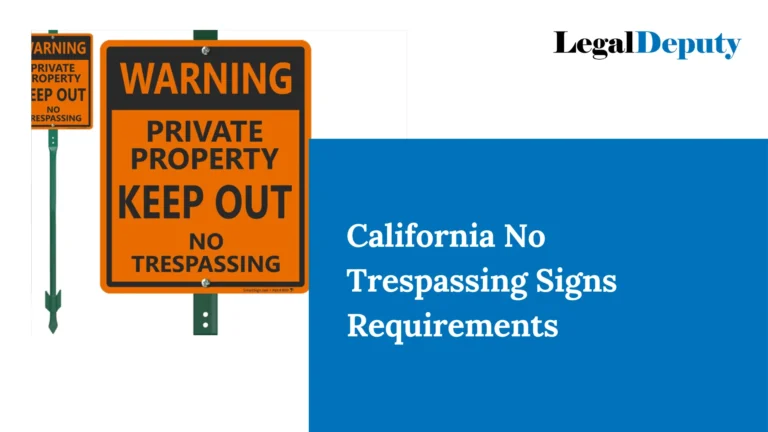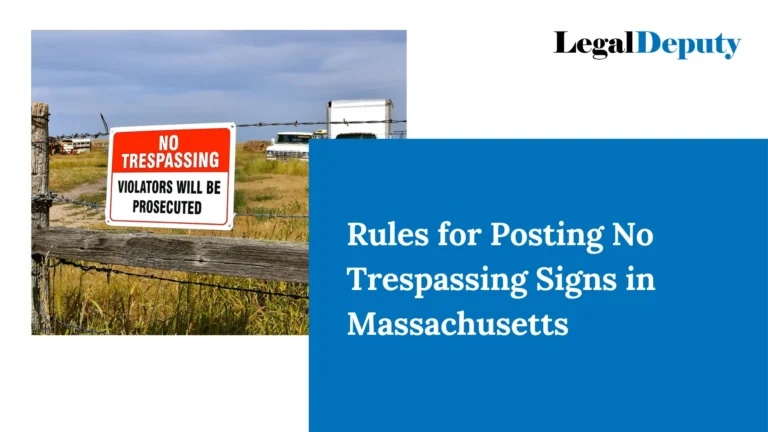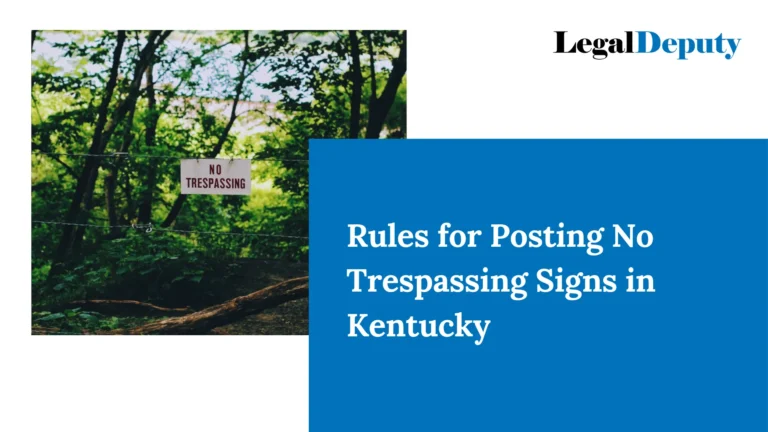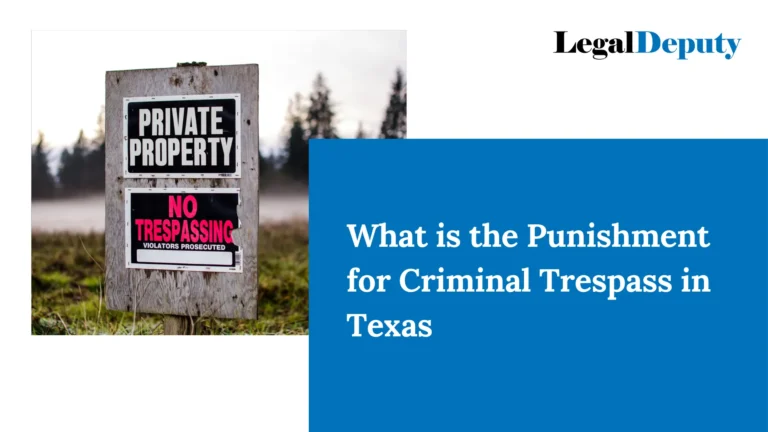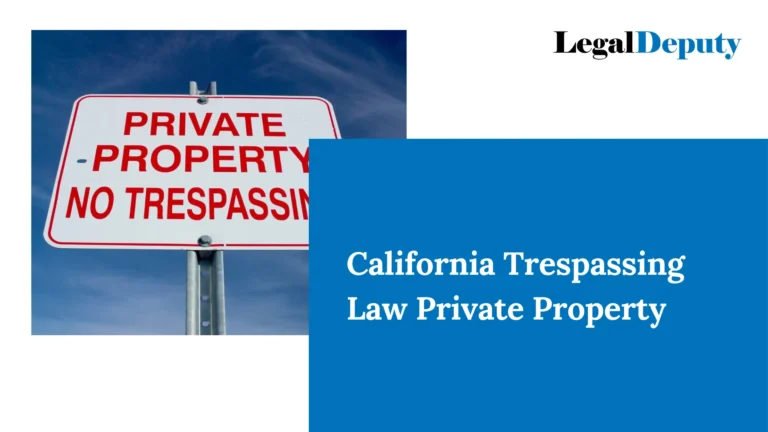How to Charge Someone with Trespassing in Ohio – All You Need To Know
Picture this: you arrive home after a long day, only to find an unexpected guest on your property. Trespassing, a seemingly benign act, can quickly turn into a legal quagmire if not addressed appropriately. In Ohio, understanding the nuances of trespassing laws is not just a matter of legality; it’s a crucial step in safeguarding your rights and property.
This blog post serves as your compass through the labyrinth of Ohio’s trespassing regulations, offering insights into the charges, the legal process, and the steps you can take. Join us as we demystify the world of trespassing laws in the Buckeye State – empowering you with the knowledge to protect what matters most.
Define Trespassing in Ohio: Navigating Legal Boundaries
Trespassing, in the context of Ohio law, is a legal concept that revolves around unauthorized entry onto another person’s property. It’s not just about the classic image of someone sneaking into a restricted area; it encompasses a spectrum of actions, each carrying its own set of consequences.
In Ohio, trespassing involves knowingly entering or remaining on someone else’s property without permission. This can include entering private residences, commercial spaces, or even undeveloped land without the owner’s consent.
Forms of Trespassing: Unpacking the Intricacies
Ohio law categorizes trespassing offenses into degrees, with each degree signifying a different level of severity. The most common forms include:
Criminal Trespass (Misdemeanor): Involves knowingly entering or remaining on another’s property without permission, constituting a misdemeanor offense.
Aggravated Trespass (Felony): Elevates the offense to a felony when the trespasser possesses a deadly weapon or when the trespass occurs in a habitation.
Understanding these distinctions is vital, as they influence the severity of the charges and potential legal consequences. Whether it’s a simple act of wandering onto private land or a more serious intrusion, comprehending the breadth of trespassing in Ohio is the first step in safeguarding property rights and navigating the legal landscape.
Types of Trespassing Offenses: Degrees and Consequences
Trespassing in Ohio isn’t a one-size-fits-all offense; rather, it unfolds across various degrees, each carrying its own weight in terms of legal repercussions. Let’s delve into the intricacies of these degrees, shedding light on the severity of charges and the potential penalties that follow.
a. Fourth-Degree Criminal Trespass (Misdemeanor)
At the entry level, we find fourth-degree criminal trespass, a misdemeanor offense. This occurs when an individual knowingly enters or remains on another’s property without authorization. While it may seem less severe on the surface, the legal ramifications can be significant. Offenders may face fines, community service, and even a brief stint of time behind bars.
b. Third-Degree Criminal Trespass (Misdemeanor)
Stepping up in severity, third-degree criminal trespass involves trespassing in a habitation or a school safety zone. The penalties escalate accordingly, with higher fines and the potential for an extended period of incarceration. The gravity of the charges underscores the importance of understanding the nuances of property boundaries and legal permissions.
c. Aggravated Trespass (Felony)
At the apex of trespassing offenses lies aggravated trespass, elevated to a felony level. This occurs when a trespasser, armed with a deadly weapon, enters or remains on someone’s property. The consequences become substantially more severe, with the potential for extended prison sentences and substantial fines. Aggravated trespassing serves as a stark reminder that certain actions can swiftly escalate legal repercussions.
Navigating the degrees of trespassing offenses in Ohio demands a keen awareness of the circumstances surrounding the incident. By grasping the distinctions in severity, individuals can better comprehend the potential consequences and, in turn, make informed decisions in response to trespassing incidents.
Steps to Charge Someone with Trespassing: Navigating Legal Recourse
Discovering an unwelcome presence on your property can be disconcerting, but taking swift and informed action is crucial when contemplating charges for trespassing in Ohio. Below, we outline a step-by-step guide, empowering property owners with the knowledge to navigate the process effectively.
Step 1. Document the Incident: Gathering Persuasive Evidence
The foundation of a successful trespassing charge lies in compelling evidence. Start by documenting the incident thoroughly. Take photographs, capture any relevant video footage, and make detailed notes about the circumstances surrounding the trespass. The more comprehensive your evidence, the stronger your case when presenting it to law enforcement.
Step 2. Contact Local Law Enforcement: Reporting the Trespass
Once you have gathered sufficient evidence, the next step is to contact your local law enforcement agency. Provide them with a detailed account of the trespassing incident, including any evidence you have collected. Law enforcement officers are trained to handle such situations and can guide you on the appropriate legal steps to take.
Step 3. File a Trespassing Report: Formalizing the Complaint
Filing a trespassing report with law enforcement is a critical step in initiating legal proceedings. Be prepared to share the evidence you’ve gathered and any details that can assist in identifying the trespasser. Your cooperation with law enforcement not only expedites the process but also ensures that the incident is officially documented.
Step 4. Assist the Investigation: Cooperation is Key
As law enforcement investigates the trespassing incident, your continued cooperation is valuable. Answer any questions they may have, provide additional information if necessary, and stay informed about the progress of the case. Your proactive involvement enhances the likelihood of a successful resolution.
Navigating the steps to charge someone with trespassing in Ohio demands a careful balance of vigilance and collaboration. By documenting incidents, engaging with law enforcement, and filing a formal report, property owners can contribute to maintaining the integrity of private spaces while reinforcing the importance of respecting personal boundaries.
Legal Process and Authorities Involved: Navigating Trespassing Cases in Ohio
Reporting a trespassing incident is just the first step in a comprehensive legal journey. Understanding the subsequent legal process and the key authorities involved is crucial for those seeking resolution. Here, we unravel the sequence of events and the pivotal roles played by law enforcement, prosecutors, and the court system in handling trespassing cases in Ohio.
a. Law Enforcement Investigation: Unraveling the Facts
Once you’ve reported the trespassing incident, law enforcement will launch an investigation. This involves scrutinizing the evidence, interviewing witnesses, and attempting to identify and locate the trespasser. Cooperation with law enforcement during this phase is essential, as their findings will lay the groundwork for the legal proceedings.
b. Prosecutor’s Assessment: Weighing Legal Options
After law enforcement completes its investigation, the case is typically handed over to a prosecutor. The prosecutor evaluates the evidence and determines the appropriate charges, considering the severity of the trespass and any additional factors, such as prior offenses. Their role is pivotal in shaping the direction of the legal proceedings.
c. Court Proceedings: From Charges to Resolution
With charges filed, the case moves into the court system. The accused will be summoned to appear in court to respond to the charges. The court proceedings may involve arraignment, pretrial hearings, and potentially a trial if the case isn’t resolved through negotiations or plea bargains. The court system serves as the ultimate arbiter, weighing the evidence presented by both sides and delivering a judgment.
d. Potential Penalties: Understanding the Consequences
The penalties for trespassing in Ohio can vary based on the severity of the offense. They may include fines, probation, community service, or even incarceration, especially in aggravated trespassing cases. Understanding the potential consequences underscores the importance of a well-prepared and thorough legal strategy.
Navigating the legal process requires diligence and patience. The collaboration between property owners, law enforcement, prosecutors, and the court system is essential for a fair and just resolution. By comprehending the roles of each entity, individuals can better navigate the complexities of trespassing cases and contribute to a legal system that upholds the principles of justice.
Defenses Against Trespassing Charges: Crafting a Robust Legal Strategy
Facing trespassing charges in Ohio doesn’t necessarily equate to an automatic conviction. Individuals have the right to defend themselves, and understanding common defenses is pivotal in navigating the legal landscape. Here, we explore defenses that individuals may employ and underscore the critical role of strong evidence in establishing a compelling case.
a. Lack of Intent or Knowledge
One common defense against trespassing charges involves demonstrating that the accused lacked the intent to trespass or was unaware that they were entering private property without permission. This could arise in situations where unclear property boundaries or absent signage may have contributed to the misunderstanding.
b. Consent or Invitation
Individuals may defend against trespassing charges by asserting that they had explicit or implied consent to be on the property. This defense relies on proving that the property owner welcomed their presence, either through explicit permission or by creating an environment where entry was reasonably assumed to be allowed.
c. Mistaken Identity
In some cases, individuals may defend themselves against trespassing charges by asserting that they were mistakenly identified as the trespasser. This could occur if there were multiple individuals present at the scene, and the accuser misidentified the person responsible for the alleged trespass.
d. Private Necessity
A less common but viable defense is the concept of private necessity. This defense argues that the accused had a legitimate reason to enter the property without permission, such as to prevent harm to themselves or others. Establishing private necessity requires strong evidence supporting the urgency of the situation.
e. Insufficient Evidence
Perhaps the most crucial defense is challenging the prosecution’s evidence. Individuals can assert that there is insufficient proof to support the trespassing charges. This underscores the importance of thorough documentation and evidence collection for both parties, emphasizing the need for accuracy in presenting the facts.
f. Cooperation with Law Enforcement
Demonstrating cooperation with law enforcement and a willingness to resolve the matter amicably can sometimes influence the legal process. This doesn’t negate the need for a strong defense but highlights the importance of a collaborative approach to finding a resolution.
In crafting a robust defense against trespassing charges, individuals must work closely with legal counsel to assess the viability of each defense strategy. The foundation of any successful defense is a meticulous examination of the evidence, emphasizing the need for accuracy, clarity, and a compelling narrative to present to the court.
Tips for Property Owners: Safeguarding Your Space
For property owners, the adage “an ounce of prevention is worth a pound of cure” holds particularly true when it comes to trespassing. Safeguarding your property involves a proactive approach that mitigates the risk of unauthorized entry. Here, we share practical tips that can help property owners create a secure environment and minimize the likelihood of trespassing incidents.
a. Clearly Define Property Boundaries
The foundation of preventing trespassing starts with a clear understanding and delineation of your property boundaries. Ensure that natural landmarks, fences, and other demarcations are well-maintained and easily visible. A precisely defined property boundary not only aids in deterring trespassers but also serves as a crucial reference point in legal matters.
b. Invest in Visible Signage
Communication is key, and visible signage is a powerful tool in conveying your property’s boundaries. Clearly post signs indicating private property, no trespassing zones, or areas restricted to authorized personnel. The visibility of these signs not only informs potential trespassers but also strengthens your legal standing in the event of an incident.
c. Regularly Inspect and Maintain Boundaries
Property boundaries can degrade over time due to weather, natural growth, or human activity. Regularly inspect and maintain your boundaries to ensure they remain intact and clearly defined. This not only aids in preventing accidental trespassing but also reinforces the message that your property is private and should be respected.
d. Install Security Measures
Consider investing in security measures that suit your property, such as motion-sensor lights, surveillance cameras, or even fencing. These deterrents not only enhance the physical security of your space but also serve as a visual warning to potential trespassers, encouraging them to think twice before attempting unauthorized entry.
e. Build Community Awareness
Establishing a sense of community awareness can be a valuable asset in preventing trespassing. Engage with your neighbors and encourage a collective effort to keep an eye on each other’s properties. This mutual vigilance fosters a shared commitment to maintaining the security of the neighborhood.
f. Educate and Communicate
Take the time to educate those who have permission to be on your property about its boundaries. Whether it’s guests, service providers, or even neighbors, clear communication about your property’s limits can help avoid unintentional trespassing.
By implementing these practical tips, property owners can proactively reduce the risk of trespassing incidents and create a secure environment. Remember, the synergy of clear boundaries, visible signage, and community involvement not only safeguards your property but contributes to a culture of respect within your neighborhood.
Conclusion
In the intricate tapestry of Ohio’s trespassing laws, knowledge is your greatest ally. Understanding the degrees of trespassing, the legal process, and available defenses empowers individuals on both sides of the fence. Remember, the clarity of property boundaries, visible signage, and a proactive approach are the keys to preventing trespassing incidents. As stewards of our spaces, let’s foster a community that values and respects property rights.
Stay informed, stay vigilant. Document incidents, collaborate with law enforcement, and build a strong defense when needed. For property owners, proactive measures go a long way in securing your space. For all, the message is clear: be aware of trespassing laws, take appropriate action, and contribute to a community that thrives on mutual respect and understanding.
Your property is more than land; it’s a sanctuary. Let’s collectively uphold the sanctity of these spaces and ensure a harmonious coexistence. Should you find yourself in the maze of trespassing concerns, remember that knowledge and diligence are your strongest advocates.
Protect what’s yours, respect what’s theirs. Together, let’s navigate Ohio’s trespassing landscape with awareness, responsibility, and a commitment to fostering a community built on mutual respect.
Disclaimer
The content provided on this blog is intended for informational purposes only and should not be construed as legal advice. While we strive to ensure the accuracy and timeliness of the information presented, laws and regulations are subject to change, and the application of legal principles can vary based on individual circumstances.
Readers are encouraged to seek professional legal advice from qualified attorneys for their specific situation. Reliance on any information provided on this blog is at the reader’s own risk. The blog authors and contributors are not responsible for any actions or decisions taken based on the information presented, nor do they establish an attorney-client relationship.
Legal matters are complex and often require individualized analysis. We recommend consulting with a licensed attorney to address your unique legal concerns. Always verify information with local authorities and legal professionals before making decisions that may have legal implications.
Thank you for understanding the limitations of the information provided on this blog.


